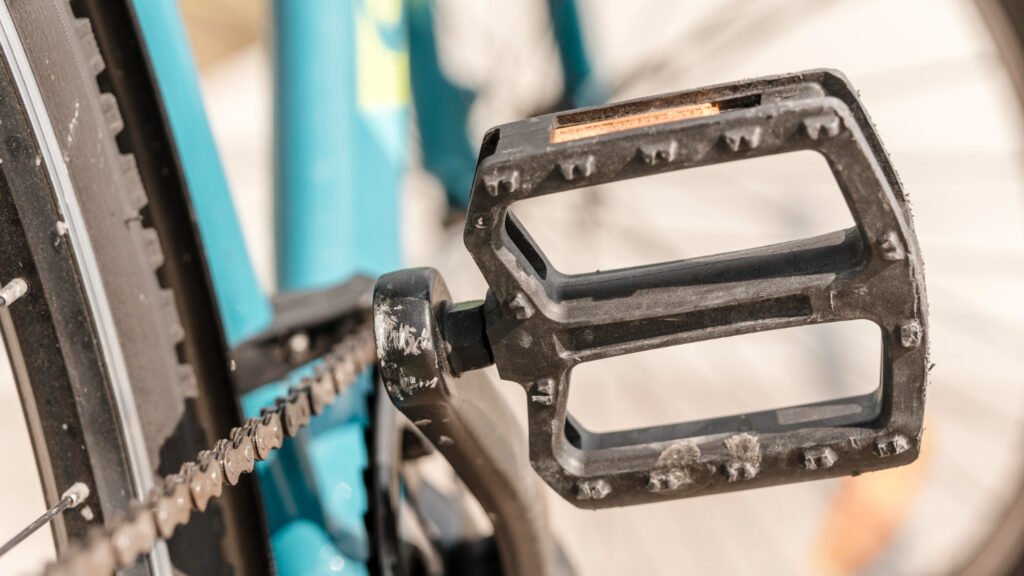The Best Fluffy Pancakes recipe you will fall in love with. Full of tips and tricks to help you make the best pancakes.
Flat Pedals vs Clipless for Trail Riding

One of the biggest debates in mountain biking comes down to pedals: flat vs. clipless. Both systems have passionate supporters, and each offers unique benefits depending on terrain, riding style, and rider experience.
Flat pedals offer freedom, confidence, and instant foot release — perfect for technical trails, freeride lines, and beginner skill-building. Clipless systems, on the other hand, maximize power transfer, efficiency, and consistency, making them a favorite for cross-country and endurance riders.
This guide compares the pros and cons of both setups so you can make the best choice for your mountain biking style.
The Confidence Factor: Flat Pedals for Mountain Cycling Freedom
Flat pedals provide unmatched confidence for technical mountain cycling through challenging terrain and obstacles. Quick foot placement adjustments allow riders to navigate tricky cycling situations with enhanced safety margins. Beginning mountain cycling enthusiasts build skills faster when they can easily dismount during learning phases. Professional freeriders and downhill cycling athletes choose flats for maximum maneuverability and instant bailout capability.
| Flat Pedal Advantages | Mountain Cycling Benefits |
| Instant foot release | Enhanced safety during technical cycling |
| Any shoe compatibility | Versatile mountain cycling gear options |
| Natural foot positioning | Improved cycling technique development |
| Easy weight shifts | Better balance during challenging cycling |
Key flat pedal benefits for mountain cycling:
- Safety first: Quick dismount capability during sketchy cycling situations
- Skill development: Forces proper technique instead of relying on cycling attachments
- Gear flexibility: Compatible with any footwear for casual cycling adventures
- Technical performance: Preferred by aggressive cycling disciplines like downhill racing
Power Transfer Excellence: Clipless Systems for Efficient Cycling
Clipless pedals maximize power transfer efficiency during demanding mountain cycling climbs and extended trail adventures. The secure connection enables both pushing and pulling motions throughout the complete cycling pedal stroke. Consistent foot positioning reduces fatigue during long mountain cycling sessions and multi-hour trail rides. Cross-country racing and endurance cycling athletes depend on clipless systems for competitive performance advantages.
| Clipless Advantages | Cycling Performance Gains |
| 360-degree power transfer | Maximum climbing cycling efficiency |
| Locked foot position | Consistent cycling form and comfort |
| Reduced leg fatigue | Extended mountain cycling endurance |
| Superior bike connection | Enhanced control during cycling |
Clipless benefits for serious mountain cycling:
- Climbing dominance: Superior traction during steep cycling ascents
- Endurance advantage: Reduced fatigue during extended cycling sessions
- Power efficiency: Complete pedal stroke utilization for competitive cycling
- Consistent positioning: Maintains optimal foot placement throughout cycling rides
Technical Trail Considerations for Mountain Cycling Success
Trail complexity significantly influences pedal choice for optimal mountain cycling performance and rider safety. Technical terrain with roots, rocks, and sudden obstacles favors flat pedals for quick cycling adjustments. Steep climbs and sustained power sections benefit from clipless systems during challenging cycling conditions. Smart mountain cycling enthusiasts often switch pedal systems based on specific trail demands and riding objectives.
Terrain-specific pedal recommendations:
- Rocky technical trails: Flat pedals allow instant cycling line adjustments
- Steep sustained climbs: Clipless systems maximize cycling power transfer
- Jump lines and drops: Flat pedals provide cycling freedom for aerial maneuvers
- Cross-country racing: Clipless efficiency crucial for competitive cycling performance
- Mixed terrain rides: Consider trail characteristics when planning cycling adventures
Matching pedal choice to terrain type optimizes both safety and performance during mountain cycling.
Learning Curve and Safety Factors in Mountain Cycling
Clipless pedals require significant practice time before becoming second nature during mountain cycling adventures. New clipless users often experience falls when failing to unclip quickly during emergency cycling situations. Flat pedals allow immediate skill progression without the fear factor associated with learning cycling attachment systems. Experienced mountain cycling riders can safely transition to clipless once basic bike handling skills develop.
Safety considerations for mountain cycling pedal choice:
- Beginner safety: Flat pedals eliminate unclipping panic during learning cycling phases
- Crash risk: Clipless systems may increase injury potential during cycling accidents
- Skill development: Flat pedals encourage proper cycling technique without mechanical assistance
- Emergency situations: Quick foot placement crucial during technical cycling challenges
- Confidence building: Flat pedals boost rider confidence during challenging cycling terrain
Consider your current mountain cycling skill level when choosing between pedal systems for safety.
Making the Right Choice for Your Mountain Cycling Style
Personal riding style ultimately determines the best pedal choice for your mountain cycling adventures and goals. Aggressive trail riders and downhill cycling enthusiasts benefit from flat pedal freedom and maneuverability. Endurance mountain cycling athletes and cross-country racers gain significant advantages from clipless power transfer efficiency. Many experienced mountain cycling riders maintain both pedal systems for different trail types and cycling objectives.
Pedal selection guide for different mountain cycling disciplines:
- Downhill and freeride: Flat pedals for maximum cycling freedom and safety
- Cross-country racing: Clipless systems for competitive cycling efficiency
- Trail riding: Either system works depending on cycling skill and comfort level
- Endurance cycling: Clipless reduces fatigue during long mountain cycling adventures
- Technical climbing: Clipless provides superior traction for challenging cycling ascents
Choose pedals that match your current mountain cycling abilities and future riding aspirations.
Summary
Key takeaways when deciding between flat pedals and clipless systems for trail riding:
- Flats for Confidence & Skill Building: Ideal for beginners, technical terrain, freeride, and downhill. They allow quick dismounts and natural foot placement.
- Clipless for Efficiency & Power: Favored by XC racers and endurance riders who need maximum climbing traction, efficiency, and reduced fatigue.
- Terrain Matters: Rocky, root-filled trails and jump lines benefit from flats, while steep climbs and long-distance rides favor clipless.
- Learning Curve: Clipless requires practice and carries higher crash risk for beginners, while flats allow easier progression.
- Best of Both Worlds: Many riders keep both setups and switch based on the ride’s demands.
Bottom line: Choose pedals that match your riding style, trail conditions, and current skill level.
This guide compares the pros and cons of both setups so you can make the best choice for your mountain biking style. For a complete breakdown of skills, gear, and trail riding strategies, check out our Mountain Biking Guide.





